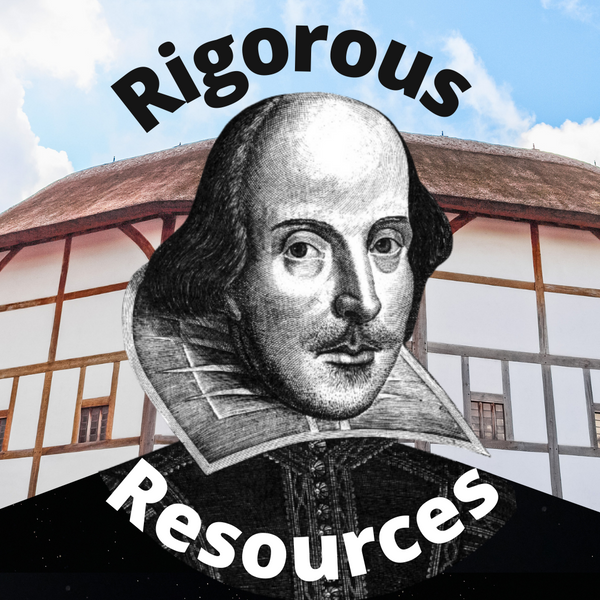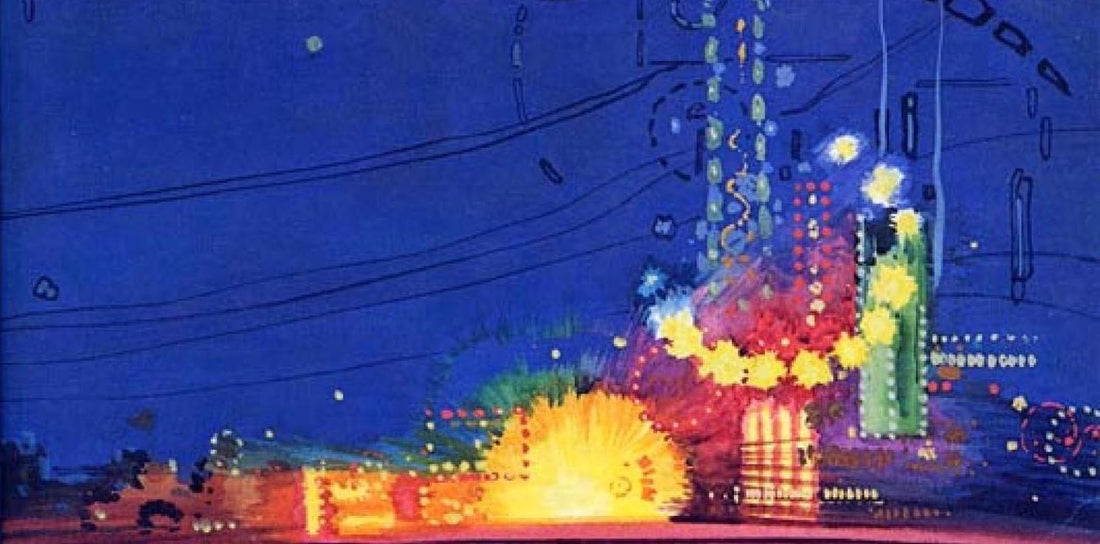Gatsby's Parties: The Carnivalesque
What's distinctively modern about the parties hosted by Jay Gatsby is that they create a carnivalesque environment where the guests are not limited to interacting with people from their own social circle or socioeconomic background. Instead, the guests are free to circulate widely amongst one another in the same way that they might at a popular entertainment venue such as an amusement park.
When describing Gatsby's party, Nick paints a scene of constant circulation and perpetual movement: “The groups change more swiftly, swell with new arrivals, dissolve and form in the same breath; already there are wanderers, confident girls who weave here and there among the stouter and more stable, become for a sharp, joyous moment the center of a group, and then, excited with triumph, glide on through the sea-change of faces and voices and color under the constantly changing light” (40-41). Not only does the verb “change” get repeated three times in this sentence, but the nouns get outnumbered and displaced in their importance by the proliferation of verbs which emphasize movement: “change,” “swell,” “dissolve,” “weave,” “glide."
By constructing a sentence with a seemingly endless succession of verb clauses, Fitzgerald may have sought to take readers on a kind of roller-coaster ride, giving us an experience of what it must have felt like to be a guest within the perpetual-motion machine of Gatsby’s party. Fitzgerald also describes the partygoers by using water metaphors — for example, “swirls and eddies of people” — in order to emphasize the fluidity of their movements (42).
The subtext for these descriptions is that Gatsby’s house party amounts to a form of popular entertainment analogous to an amusement park or World’s Fair. The narrator observes that the guests at Gatsby’s party “conducted themselves according to the rules of behavior associated with an amusement park” (41). This reference to an “amusement park” gains added significance when interpreted in light of the painting of Coney Island that Fitzgerald requested for his editor to reserve for the cover of The Great Gatsby. In Chapter 5, Nick will observe that Gatsby’s luminous mansion “looks like the World’s Fair”; and Gatsby will invite Nick to join him on a trip to the amusement park at Coney Island: “Let’s go to Coney Island, old sport” (81).

Why might these references to an “amusement park” be important to Fitzgerald’s portrait of life in the modern era? In the late 19th century, during the Gilded Age, many Americans found themselves with more disposable income as well as more leisure time with which to spend it. The demand for leisure activities was met by the development of hundreds of amusement parks in cities and small towns across the U.S. And the amusement park on Coney Island, which is located just 30 miles from Gatsby’s house in West Egg, was the largest amusement park in the United States from the 1880s through the 1940s. In the years following World War I, people seemed to covet more exciting forms of entertainment, and this desire was met by the development of Ferris wheels and roller coasters. In 1920, Coney Island opened a 150-foot Ferris wheel called the “Wonder Wheel” — which gets depicted as a luminous yellow circle on the cover of The Great Gatsby. But most importantly…
Amusement Parks: Emblems of Democracy? Or Mindless Conformity?
Amusement parks represented both the positive and the negative aspects of American culture in the Roaring Twenties. Indeed, the popularity of amusement parks provoked cultural observes to feel the same mix of conflicting emotions that Nick feels when he looks out at the carnivalesque ambiance of Gatsby’s party.
On the one hand, when viewed from a positive perspective, amusement parks were taken to represent quintessentially American values like democracy, equality, and inclusivity. Not only did amusement parks provide a form of entertainment that was affordable and accessible to people from all classes, but they created opportunities for people from difference cultural and socioeconomic backgrounds to mix and intermingle in a manner that was historically unprecedented. Literary scholar Philip McGowan observes that Gatsby’s party fosters a similar “environment of political equality and democratization” because its carnival atmosphere “suspends the social organizations, hierarchies, and prohibitions of outside America” (Philip McGowan, “The American Carnival of The Great Gatsby.” Connotations 15:1-3 (2005/2006): 146).
On the other hand, when viewed from a negative perspective, amusement parks generated anxieties about the massification of American culture. In the early 20th century, sociologists began to express concern that the massification of modern life — evident in everything from mass production and mass consumption to mass entertainment and mass spectacle — was causing people to lose touch with their individuality and their capacity to think critically, resulting in increasing conformity and group-think. As we have seen, Nick’s description of the guests at Gatsby’s party gives the impression that they meld or blend together into “swirls and eddies of people” (42).
Literary scholar Philip McGowan points out that Gatsby’s party threatens to press its diverse attendees into an undifferentiated mass: “Gatsby’s partygoers form one homogeneous mass of temporarily equated identity in a carnival realm constructed purely for purposes of spectacle. […] The differentiated identities of these people merge under the influence of alcohol and within the highly colored carnival environment of Gatsby’s mansion” (Philip McGowan, “The American Carnival of The Great Gatsby.” Connotations 15:1-3 (2005/2006): 146). If your students seem intrigued by this dualistic aspect of Gatsby’s party, then you might ask this follow-up question: When he is first exposed to the carnivalesque atmosphere of Gatsby’s party, does Nick respond primarily with admiration or repulsion? Why?
Uninvited Guests
Finally, why does Nick spill so much ink on the question of whether the guests at Gatsby’s party were “invited”? Why, for example, does Nick assert, “I believe that on the first night I went to Gatsby’s house I was one of the few guests who had actually been invited. People were not invited — they went there. They got into automobiles which bore them out to Long Island, and somehow they ended up at Gatsby’s door” (41)?
The question of whether the guests at Gatsby’s parties are “invited” is significant because it sheds light on how the parties that Gatsby hosts in West Egg differ from the parties that old-money families like the Buchanans host in East Egg. In Chapter 1, the dinner party hosted by Tom Buchanan was attended only by people who had been formally invited. If anyone else were to have shown up, they would have been promptly turned away; for Tom embodies the forces that fortify social hierarchies.
In Chapter 1, Tom Buchanan’s anxious need to fortify borders and boundaries was reflected in his concern that the “rise” of “other races” would leave white people “utterly submerged” (12-13). In Chapter 3, by contrast, the house party hosted by Gatsby is open to all comers; the people who attend do not need a formal invitation any more than they need to have a specific racial, religious, or class background. Thus, Gatsby’s party might be said to embody a spirit of democracy and inclusivity. Whereas Tom embodies the forces that would fortify boundaries, Gatsby embodies the forces that would dissolve class boundaries and overturn social hierarchies.

Finally, there is one additional reason why Fitzgerald keeps returning to the question of whether the guests at Gatsby’s party have been invited. In the early twentieth century, newly rich people were often described dismissively as “uninvited guests.” That is, the nouveau riche — or people who possessed “new money” — were framed as people who had not been invited into the upper class and whose membership there was dubious. Gatsby’s parties are a place where even “uninvited guests” are made to feel welcome and experience a sense of belonging. Would they be made to feel welcome at a party hosted by the Buchanans?
Teach It Today…

Eager to explore the complex ways in which Fitzgerald constructs his novel, with a dualistic perspective which grasps both the problems and the promises of the modern world? You'll definitely want to check out this Complete Teaching Unit on The Great Gatsby! The 200-page resource packet includes discussion questions, vocabulary lists, reading quizzes, and writing tasks for every chapter of The Great Gatsby. It also features special-topics worksheets on the novel’s symbolic settings, literary devices, color symbolism, socioeconomic hierarchies, and much more!
Save yourself hundreds of hours of prep time while motivating your students to be highly engaged. Click here to learn more about the Complete Teaching Unit on The Great Gatsby!

